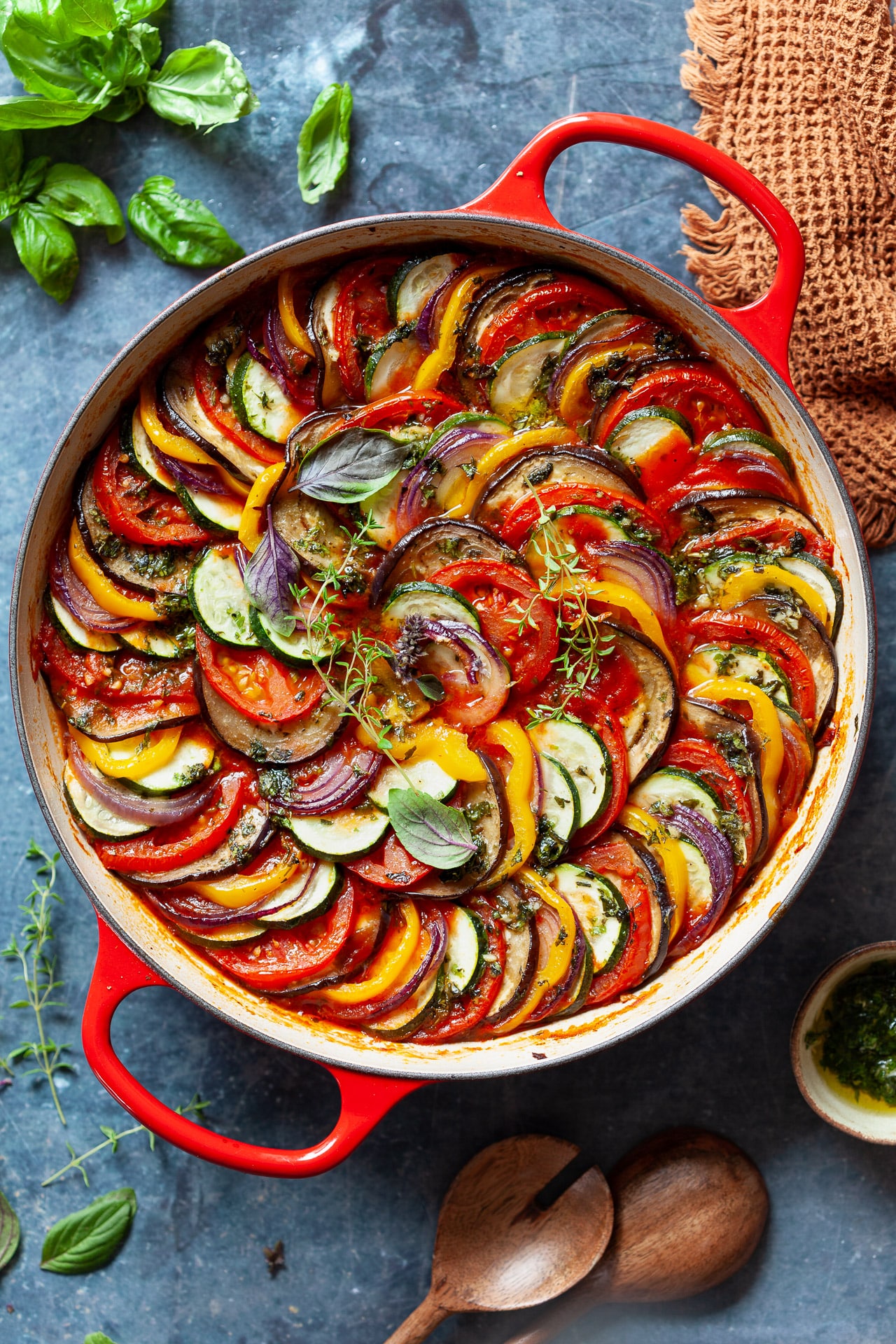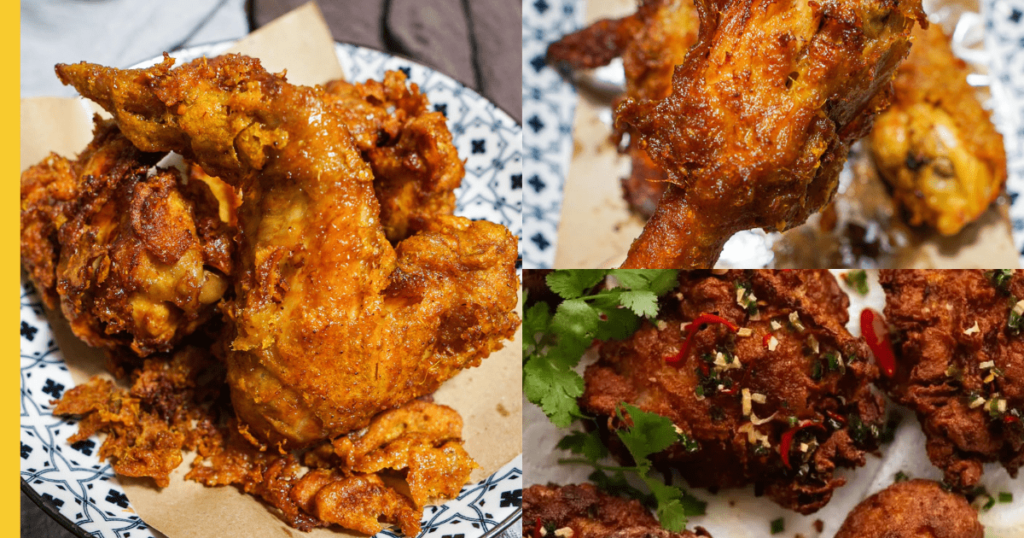A Journey Through Tapas: A Culinary Adventure in Small Bites
Related Articles
- Cooking With Exotic Spices: A Guide To Using Harissa, Gochujang, And Ras El Hanout
- A Journey Through Flavors: Unraveling The Secrets Of Rogan Josh
- A Journey Through The World Of Quiche: From Humble Beginnings To Modern Masterpieces
- Chili Crab: A Singaporean Icon, From Humble Beginnings To Global Fame
- A Slice Of History: The Evolution Of Pizza In Italy
Introduction
Uncover the latest details about A Journey Through Tapas: A Culinary Adventure in Small Bites in this comprehensive guide.
A Journey Through Tapas: A Culinary Adventure in Small Bites

Tapas, those delightful little bites of Spanish culinary artistry, have become a global phenomenon. They’re not just food, they’re an experience. A journey through the vibrant flavors and textures of Spain, served in a social and convivial atmosphere. But what exactly are tapas, and how do they capture the essence of Spanish cuisine? Let’s embark on a culinary adventure to explore the world of tapas.
The Origin Story: From Simple Beginnings to Global Sensation
The word "tapa" itself is thought to have originated from the Spanish verb "tapar," meaning "to cover." It’s believed that the tradition of tapas began in the 19th century, when Spanish taverns would offer small snacks to cover their drinks, preventing flies from landing in them. These simple snacks, often just slices of bread topped with cured meats or olives, were a practical solution that evolved into a cultural phenomenon.
Over time, tapas transformed from mere practicalities into a celebration of Spanish culinary heritage. As Spain’s regional cuisines flourished, so did the diversity of tapas. Each region developed its own specialties, showcasing the local ingredients and cooking techniques. From the seafood-rich coastlines to the mountainous regions with their hearty stews, the tapas landscape became a vibrant mosaic of culinary delights.
The Art of Tapas: More Than Just Small Plates
Tapas are more than just bite-sized portions; they represent a way of eating, a social experience, and a celebration of the culinary art. The joy of tapas lies in sharing, in sampling diverse flavors, and in engaging in lively conversations with friends and family.
Here are some key principles that define the art of tapas:
- Variety is Key: The essence of tapas lies in the diversity of flavors, textures, and ingredients. From savory to sweet, from hot to cold, the ideal tapas spread offers a delightful range of culinary experiences.
- Sharing is Caring: Tapas are meant to be shared, encouraging conversation and a convivial atmosphere. The act of sharing food fosters a sense of community and enhances the overall enjoyment of the meal.
- Quality Over Quantity: The focus in tapas is on quality ingredients and meticulous preparation. Even the simplest tapas, like a slice of cured ham or a dish of olives, showcases the finest quality ingredients available.
- Creativity is Celebrated: Tapas chefs and home cooks alike are encouraged to be creative and innovative. Traditional recipes are often reinterpreted, giving rise to new and exciting variations.

Unveiling the Culinary Techniques: A Masterclass in Flavor
The magic of tapas lies not only in the ingredients but also in the culinary techniques that bring them to life. Let’s delve into the world of Spanish cooking techniques, exploring the methods that create the signature flavors of tapas.
1. The Art of Curing: Preserving Flavor and Tradition
Curing, a traditional method of preserving food, plays a pivotal role in Spanish cuisine. It involves using salt, spices, and sometimes smoke to draw moisture from the food, extending its shelf life and developing complex flavors.
Commonly Cured Tapas:
- Jamón Ibérico: This iconic cured ham, made from the Iberian pig, is a testament to Spanish culinary tradition. The process of curing jamón Ibérico can take months or even years, resulting in a rich, savory flavor and a melt-in-your-mouth texture.
- Chorizo: This spicy cured sausage is a staple in Spanish cuisine. Made from pork, paprika, and other spices, chorizo adds a vibrant kick to many tapas dishes.
- Lomo: Similar to jamón Ibérico, lomo is a cured pork loin, offering a slightly milder flavor than jamón.
- Boquerones: These marinated anchovies are a popular tapa, particularly in Andalusia. The curing process involves brining and vinegar, resulting in a delicate, briny flavor.

2. The Power of Marinades: Infusing Flavor and Tenderness
Marinades are a cornerstone of Spanish cuisine, adding depth of flavor and enhancing the texture of various ingredients. Marinades typically consist of a combination of oil, vinegar, herbs, spices, and sometimes wine or citrus juice.
Popular Marinade Combinations:
- Garlic and Lemon: A classic marinade for seafood and vegetables, the combination of garlic and lemon adds a bright, zesty flavor.
- Olive Oil and Herbs: This simple yet effective marinade uses olive oil, garlic, oregano, and other herbs to infuse a rich, herbaceous flavor.
- Vinegar and Spice: For a tangy and spicy kick, vinegar and chili flakes are often combined with garlic and herbs.
3. The Allure of Sauces: Elevating Flavors with Finesse
Sauces play a crucial role in Spanish cuisine, adding complexity and depth to tapas dishes. From creamy aioli to vibrant romesco, sauces enhance the overall flavor profile and bring harmony to the dish.
Classic Spanish Sauces:
- Aioli: This creamy garlic sauce, made from olive oil, garlic, and lemon juice, is a versatile accompaniment to many tapas.
- Romesco: This nutty and vibrant sauce, made from roasted red peppers, almonds, tomatoes, and garlic, is perfect for dipping bread, vegetables, or seafood.
- Salsa Brava: This spicy tomato sauce, typically made with red pepper flakes, garlic, and onions, adds a fiery kick to tapas.
4. The Art of Frittering: Golden Bites of Crispy Delight
Frittering is a popular technique in Spanish cuisine, creating crispy and flavorful tapas that are both satisfying and versatile. The batter for fritters can be simple or elaborate, depending on the recipe.
Popular Frittered Tapas:
- Croquetas: These creamy, deep-fried fritters are filled with various ingredients, such as ham, cheese, or seafood.
- Calamares Fritos: These crispy fried squid rings are a classic Spanish tapas dish.
- Patatas Bravas: These crispy fried potatoes are typically served with aioli and salsa brava, offering a delightful contrast of textures and flavors.
5. The Magic of Grilling: Bringing out Natural Flavors
Grilling is another popular technique in Spanish cuisine, allowing the natural flavors of ingredients to shine through. Whether using charcoal or gas grills, the process of grilling imparts a smoky aroma and creates a delightful char on the surface of the food.
Grilling Favorites:
- Pimientos de Padrón: These small, green peppers are grilled until blistered and slightly charred, offering a sweet and slightly bitter flavor.
- Gambas al Ajillo: This simple dish features grilled prawns sautéed with garlic and olive oil, creating a flavorful and aromatic tapas option.
- Cordero: Grilled lamb is a popular dish in Spain, often marinated with herbs and spices before grilling.
Navigating the World of Tapas: A Culinary Guide
Now that we’ve explored the techniques, let’s dive into the world of tapas dishes themselves. Here’s a guide to some of the most popular and iconic tapas, offering insights into their origins, ingredients, and preparation.
1. The Classics: Tapas That Define Spanish Cuisine
- Tortilla Española: This quintessential Spanish omelet is a staple in tapas bars and homes alike. Made with eggs, potatoes, and often onions, the tortilla Española is a simple yet satisfying dish.
- Patatas Bravas: These crispy fried potatoes, typically served with aioli and salsa brava, are a popular tapas choice. The contrasting textures and flavors make them a crowd-pleasing dish.
- Gambas al Ajillo: This simple yet flavorful dish features grilled prawns sautéed with garlic and olive oil, creating a delicious and aromatic tapas option.
- Pimientos de Padrón: These small, green peppers are grilled until blistered and slightly charred, offering a sweet and slightly bitter flavor.
- Jamón Ibérico: This iconic cured ham, made from the Iberian pig, is a testament to Spanish culinary tradition. The process of curing jamón Ibérico can take months or even years, resulting in a rich, savory flavor and a melt-in-your-mouth texture.
2. Seafood Delights: A Taste of the Spanish Coast
- Boquerones: These marinated anchovies are a popular tapa, particularly in Andalusia. The curing process involves brining and vinegar, resulting in a delicate, briny flavor.
- Calamares Fritos: These crispy fried squid rings are a classic Spanish tapas dish.
- Pulpo a la Gallega: This traditional Galician dish features boiled octopus served with olive oil, paprika, and salt.
- Mejillones al Vapor: These steamed mussels are a simple yet flavorful tapa, typically served with white wine and garlic.
3. Vegetarian Treasures: Plant-Based Delights
- Pimientos de Padrón: These small, green peppers are grilled until blistered and slightly charred, offering a sweet and slightly bitter flavor.
- Espinacas con Garbanzos: This dish features spinach and chickpeas sautéed with garlic and olive oil, offering a simple and flavorful vegetarian option.
- Ensalada Rusa: This Russian salad, made with potatoes, peas, carrots, and mayonnaise, is a popular vegetarian tapa in Spain.
- Pan con Tomate: This simple yet delicious tapa features toasted bread rubbed with ripe tomatoes, garlic, and olive oil.
4. Regional Specialties: A Culinary Tour of Spain
- Tapas from Andalusia: This region in southern Spain is known for its vibrant flavors and seafood dishes. Popular Andalusian tapas include boquerones, gazpacho, and pescaíto frito (fried fish).
- Tapas from Catalonia: Catalonia, in northeastern Spain, is known for its unique culinary traditions. Popular Catalan tapas include pan con tomate, patatas bravas, and escalivada (roasted vegetables).
- Tapas from Galicia: Galicia, in northwestern Spain, is known for its seafood and hearty stews. Popular Galician tapas include pulpo a la Gallega, empanadas, and caldo gallego (Galician soup).
- Tapas from the Basque Country: The Basque Country, in northern Spain, is known for its innovative cuisine and use of local ingredients. Popular Basque tapas include pintxos (small skewers), bacalao al pil pil (cod with garlic and olive oil), and txakoli (sparkling Basque wine).
Crafting the Perfect Tapas Experience: A Step-by-Step Guide
Now that you’ve been introduced to the world of tapas, let’s explore how to create your own unforgettable tapas experience.
1. Planning the Menu: A Symphony of Flavors
- Consider Your Guests: Think about the preferences and dietary restrictions of your guests when planning your tapas menu.
- Balance of Flavors: Aim for a variety of flavors and textures to create a balanced and enjoyable spread.
- Variety of Dishes: Choose a range of tapas, including hot and cold, savory and sweet, and dishes with different textures.
- Presentation is Key: Arrange the tapas beautifully on platters and plates to create an appealing and inviting spread.
2. Selecting the Ingredients: Quality is Paramount
- Freshness is Essential: Choose fresh, high-quality ingredients for your tapas.
- Local Produce: If possible, source local ingredients to support local farmers and enhance the flavor of your dishes.
- Don’t Be Afraid to Experiment: Try new ingredients and combinations to create your own unique tapas.
3. Mastering the Techniques: From Curing to Grilling
- Practice Makes Perfect: Familiarize yourself with the basic techniques of Spanish cooking, such as curing, marinating, and grilling.
- Don’t Be Afraid to Ask for Help: If you’re unsure about a particular technique, don’t hesitate to ask for advice from experienced cooks or chefs.
4. Setting the Stage: A Convivial Atmosphere
- Choose the Right Setting: Create a relaxed and inviting atmosphere for your tapas gathering.
- Music and Ambiance: Play Spanish music or create a playlist that complements the mood of your tapas spread.
- Conversation and Connection: Encourage conversation and sharing amongst your guests.
5. Enjoying the Journey: Savoring Every Bite
- Take Your Time: Enjoy the tapas at your own pace, savoring the flavors and textures of each dish.
- Share and Connect: Share stories and experiences with your guests as you enjoy the tapas.
- Embrace the Unpredictable: Be open to trying new dishes and exploring the diverse world of tapas.
Culinary Tips and Tricks: Secrets to Success
Here are some helpful tips and tricks to elevate your tapas experience:
- Use Good Olive Oil: Olive oil is the backbone of Spanish cuisine, so choose a high-quality extra virgin olive oil for best results.
- Don’t Overcook Seafood: Seafood should be cooked quickly and gently to avoid overcooking and dryness.
- Experiment with Spices: Spanish cuisine is known for its use of spices, so don’t be afraid to experiment with different combinations.
- Pair Your Tapas with Wine: Spanish wines, particularly Rioja and Ribera del Duero, are excellent pairings for tapas.
- Serve Tapas at Room Temperature: Most tapas are best served at room temperature, so allow them to come to room temperature before serving.
- Don’t Be Afraid to Make Mistakes: Tapas are about experimentation and creativity, so don’t be afraid to make mistakes along the way.
The Enduring Legacy: A Culinary Tradition for All
Tapas are more than just food; they’re a way of life, a celebration of culinary tradition, and a testament to the vibrant culture of Spain. From simple beginnings to global sensation, tapas continue to captivate food enthusiasts worldwide, offering a delightful journey through the flavors and textures of Spain. So, gather your friends and family, embark on a culinary adventure, and discover the magic of tapas.
Closure
We hope this article has helped you understand everything about A Journey Through Tapas: A Culinary Adventure in Small Bites. Stay tuned for more updates!
Make sure to follow us for more exciting news and reviews.
Feel free to share your experience with A Journey Through Tapas: A Culinary Adventure in Small Bites in the comment section.
Keep visiting our website for the latest trends and reviews.





